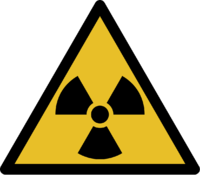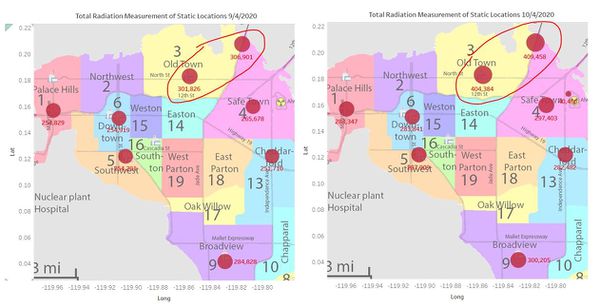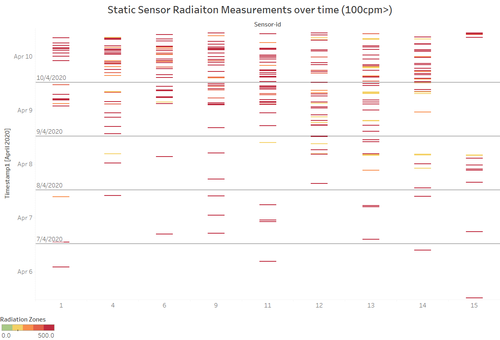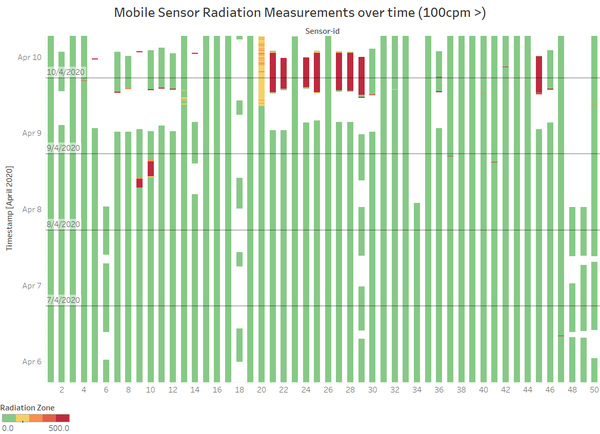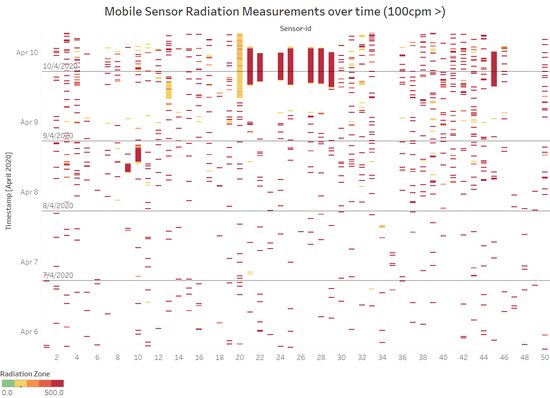IS428 AY2019-20T1 Assign Benedict Then Question 3
|
|
|
|
|
|
3.Given the uncertainty you observed in question 2, are the radiation measurements reliable enough to locate areas of concern?
Visualization Information:
The visualization on the left shows the sumed radiation measurement of each Static Sensor on 9/4/2020 and 10/4/2020 when the major events occurred.
The visualisation on the right shows the radiation measurements of all Static Sensors individually from 06/04/2020 to 10/04/2020. Each dot represents one radiation reading of a sensor at a timestamp (e.g. 06/04/2020 12:00:05 PM, mobile sensor 1, 20 cpm).
Identifying potentially Contaminated Locations
Looking at the sum-ed radiation measurements on the map for 9/4/2020 and 10/4/2020, there is no obvious signs that any of the locations is contaminated. All the locations have similar sum-ed measurements. In addition, the visualization on the right shows that there are no obvious signs too. No Prolonged high radiation readings can be seen during the 4 days, at the very most, there are more frequent spikes during 9/4/2020 and 10/4/2020 but is not significant to identify clearly that the locations are indeed contaminated. At the very most, there are 2 locations that have a slightly higher reading than the rest, which are Old Town and Jade Bridge with 400k and above sum-ed radiation readings as compared to the rest with 280k - 300k in radiation measurements on 10/4/2020.
Visualization Information:
These visualisations show the radiation measurements of all Mobile Sensors individually from 06/04/2020 to 10/04/2020. Each dot represents one radiation reading of a sensor at a timestamp (e.g. 06/04/2020 12:00:05 PM, mobile sensor 1, 20 cpm). Both Visualisations above are the same. Just that the one of right has been filtered to show only radiation readings above 100cpm. The reason for the visualisation on the right is because there are so many radiation readings that are at a normal/green level that it made the high readings not visible. Hence, once I filtered it, we can see more high readings as shown in the second visualisation.
Identifying potentially Contaminated Vehicles
From the visualization above, we can that there are certain sensors that have a prolonged period of high radiation measurements of 100 cpm and above (Yellow Zone >). This can be seen in mobile sensors 9, 10, 13, 20, 21, 22, 24, 25, 27, 28, 29, 45. These prolonged high radiation measurements started from the latter half of 9/4/2020 to 10/4/2020, where it is around the same time as the earthquake resulting in radiation contamination. Hence, it is likely that these vehicles having these sensors are contaminated.
